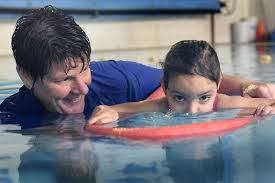Your guide to choosing the right water safety course for a safer future
Why Water Safety Matters More Than Ever
Each summer in Australia brings both joy and tragedy. While beaches, rivers, and backyard pools offer moments of fun and freedom, they also carry real risks—especially for children and those with limited swimming skills. The need for competent swim instructors and widely available water safety course options is rising, not just to teach strokes but to save lives.
Whether you’re a parent, a school coordinator, or someone looking to make a real impact through teaching, choosing an accredited water safety course can be a life-changing decision—for you and those you teach.
Understanding the Role of a Water Safety Instructor
Water safety instructors aren’t lifeguards in disguise. They’re skilled educators trained to teach water confidence, swimming fundamentals, and drowning prevention. Their classrooms aren’t desks and whiteboards but pools and open water. And their lessons? The kind that stick for life.
Instructors learn to:
- Deliver structured swim and survive programs
- Identify and manage risks in various aquatic environments
- Communicate effectively with all age groups, especially children
- Support students with diverse needs or limited water exposure
Completing a certified water safety course prepares you to deliver quality instruction under nationally recognised frameworks—vital in a country where water is part of the lifestyle.
Key Components of an Accredited Water Safety Course
Enrolling in an accredited course means gaining both theoretical knowledge and practical skills. Here’s what to expect:
1. Comprehensive Classroom Instruction
While much of the learning happens in the water, participants first cover vital safety theory including:
- Risk assessment and hazard identification
- Emergency response planning
- Aquatic supervision strategies
- CPR and first aid basics
2. In-Pool Teaching Practice
Hands-on sessions simulate real teaching environments. You’ll:
- Lead water familiarisation drills
- Deliver beginner-level stroke instruction
- Respond to simulated emergency situations
- Get evaluated by experienced trainers
This is where confidence is built. You’ll make mistakes, get feedback, and grow fast.
3. Child-Centred Learning Techniques
Effective instructors go beyond technique. They create safe, engaging, and age-appropriate lessons. A strong water safety course will also equip you to:
- Manage group behaviour in and around the pool
- Adapt lessons for nervous swimmers
- Use games and stories to build comfort and trust
Who Should Take a Water Safety Course?
A water safety course isn’t just for future instructors. It’s ideal for:
- Teachers and educators delivering school-based swimming programs
- Youth workers or camp leaders responsible for aquatic activities
- Parents or guardians keen to supervise family swim time more safely
- Sports and fitness professionals adding value to their existing qualifications
Even experienced swimmers can benefit—because teaching requires a different skill set than performing.
Duration and Certification
Most accredited instructor training runs over several days or weeks, combining face-to-face classes with online modules and practical assessment. After completion, participants receive a recognised qualification that enables them to work at swim schools, schools, and community programs across the country.
Courses may also count toward professional development hours for teachers and allied health professionals.
The Ongoing Demand for Swim Instructors
Australia faces a persistent instructor shortage—particularly in regional and multicultural communities. According to Royal Life Saving Australia, hundreds of new swim teachers are needed each year to meet demand. That means job opportunities are abundant, flexible, and deeply meaningful.
If you’re considering a career change or a side income stream that truly matters, this could be the start.
Choosing the Right Training Provider
Not all swim teacher training is equal. Look for these key signs of quality:
- National accreditation and government recognition
- Trainers with real-world experience
- Emphasis on inclusive teaching practices
- Pathways to further professional development
You should also consider the course structure. Does it include both practical assessment and theory? Is there support after completion?
Here’s a great place to start: take a look at this water safety course that delivers nationally recognised qualifications, hands-on experience, and a community-first approach.
Career and Impact Beyond the Pool
Graduates often find roles in:
- Local council-run pools and leisure centres
- Swim schools and early learning programs
- Sporting academies or NDIS-supported programs
But more than that, they become part of a ripple effect—one where every lesson delivered might one day prevent a tragedy.
Those trained through a structured water safety course know they’re teaching more than backstroke or treading water. They’re delivering confidence, preparedness, and often, joy.
Wrap-Up: More Than a Certificate
Accredited swim instructor training is one of the most rewarding learning paths in Australia. You walk away not only with a formal qualification, but with the skills to change lives—possibly even save them.
If you’ve ever thought about working with children, contributing to your community, or simply becoming a safer, more capable adult around water—there’s no better time to enrol in a water safety course.

